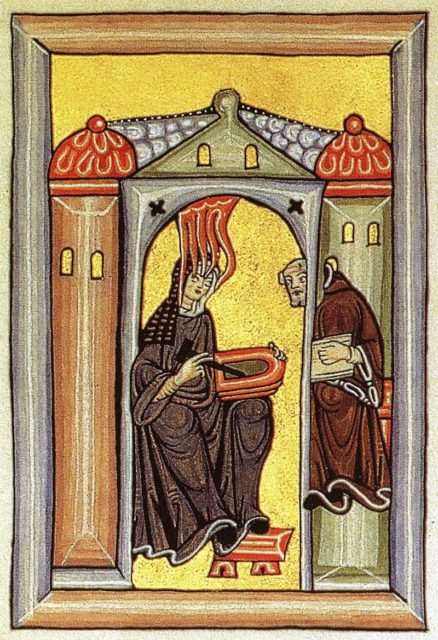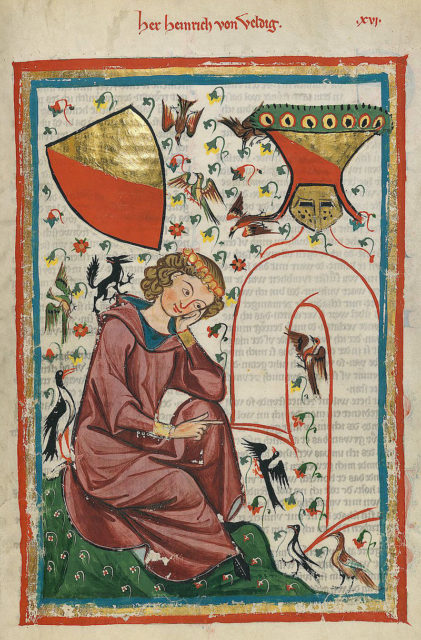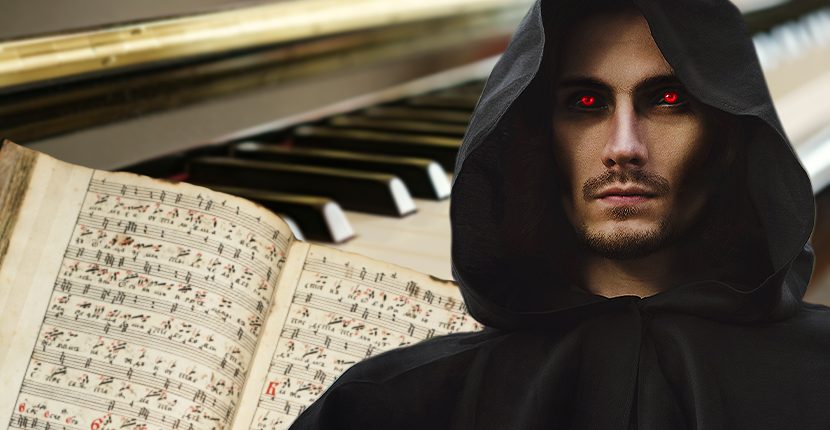During the Middle Ages, the Catholic Church dominated every sphere of life as the most powerful institution in medieval Europe. It monopolized education and deeply affected architecture, art, and even music. Yes, you read that correctly, music. Apart from being the main producer of music, the Catholic Church suppressed any kind of non-sacred music that appeared during the Middle Ages in Europe.
According to popular belief, music was a gift from God and was only supposed to celebrate God. Any other form of secular music, in most cases, was not approved by the Catholic Church and was even considered to be the work of the Devil. The Church even went so far as to discourage composers of the era from using certain intervals in music, such as “the augmented fourth interval” or the Tritonus.
In music theory, the tritone is strictly defined as a musical interval composed of three adjacent whole tones. One specific type of tritone, known as the augmented fourth interval, or the Tritonus, spans across three whole steps in the scale and is one of the most dissonant musical intervals.

Before the emergence of major and minor scales, the interval was considered so unnatural and discordant that it was named the “Diabolus in Musica,” literally “the Devil in Music,” the Devil’s interval. Church leaders heavily discouraged the use of these notes and some even went so far as to proclaim this was the sound of “conjuring the Devil”.
Nowadays the augmented fourth interval can be heard in all kinds of songs in every possible genre of music. It was one of the hallmarks of the 1940s and 1950s jazz, it can be heard in The Simpsons theme song, the South Park theme song, West Side Story’s “Maria” and Jimi Hendrix’s song “Purple Haze.” Also, perhaps because of the interval’s infamous connection with the Devil, the interval is widely employed by many rock and metal bands.

While there is no official record of the interval being forbidden by the religious authorities of the time, the reasons for its notoriety are quite understandable. The tritone’s infamy dates back to the 9th century, when it was deemed too dissonant to become a part of any composition. From then on, medieval composers like Hildegard of Bingen, Chretien de Troyes, and Heinrich van Vedelke were discouraged from using it, as they were supposed to follow strict rules of writing music. These rules were not difficult to enforce, as various Christian faiths have either produced or influenced the production of all music of the Western cannon.

An article in BBC News Magazine quotes Bob Ezrin, a Canadian music producer who has worked on recordings with some of the greatest musicians and rock bands in history, including Kiss, Pink Floyd, Deep Purple, and Alice Cooper, as saying: “It apparently was the sound used to call up the beast. There is something very sexual about the tritone. In the Middle Ages when people were ignorant and scared, when they heard something like that and felt that reaction in their body they thought ‘uh oh, here comes the Devil.’”
Although the name “Diabolus in Musica” is to be taken allegorically as a description of dissonance and music not following the natural order, some people throughout history undoubtedly believed that the interval was the devil’s literal home in the world of music.
Early classical music functioned well without the Devil’s Interval, but the classical music of the 19th and the 20th century perfected it and popularized its usage. It was widely used by Beethoven and Wagner, and some of the greatest musical composition, like Wagner’s “Gotterdammerung” wouldn’t be same without it. However, a part of its initial infamy remains, as it is always used to evoke a sinister atmosphere of mystery, magic, and myth.
